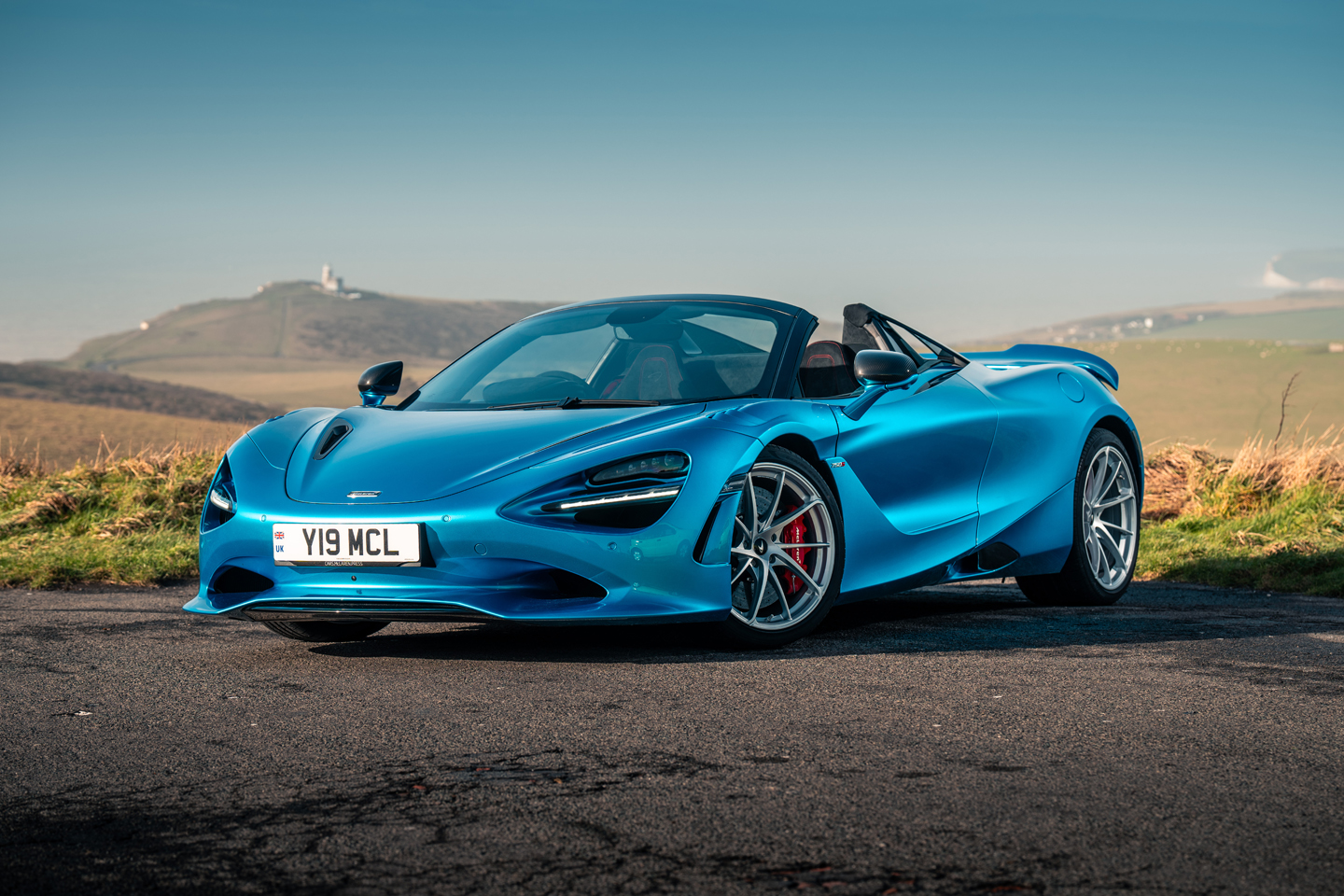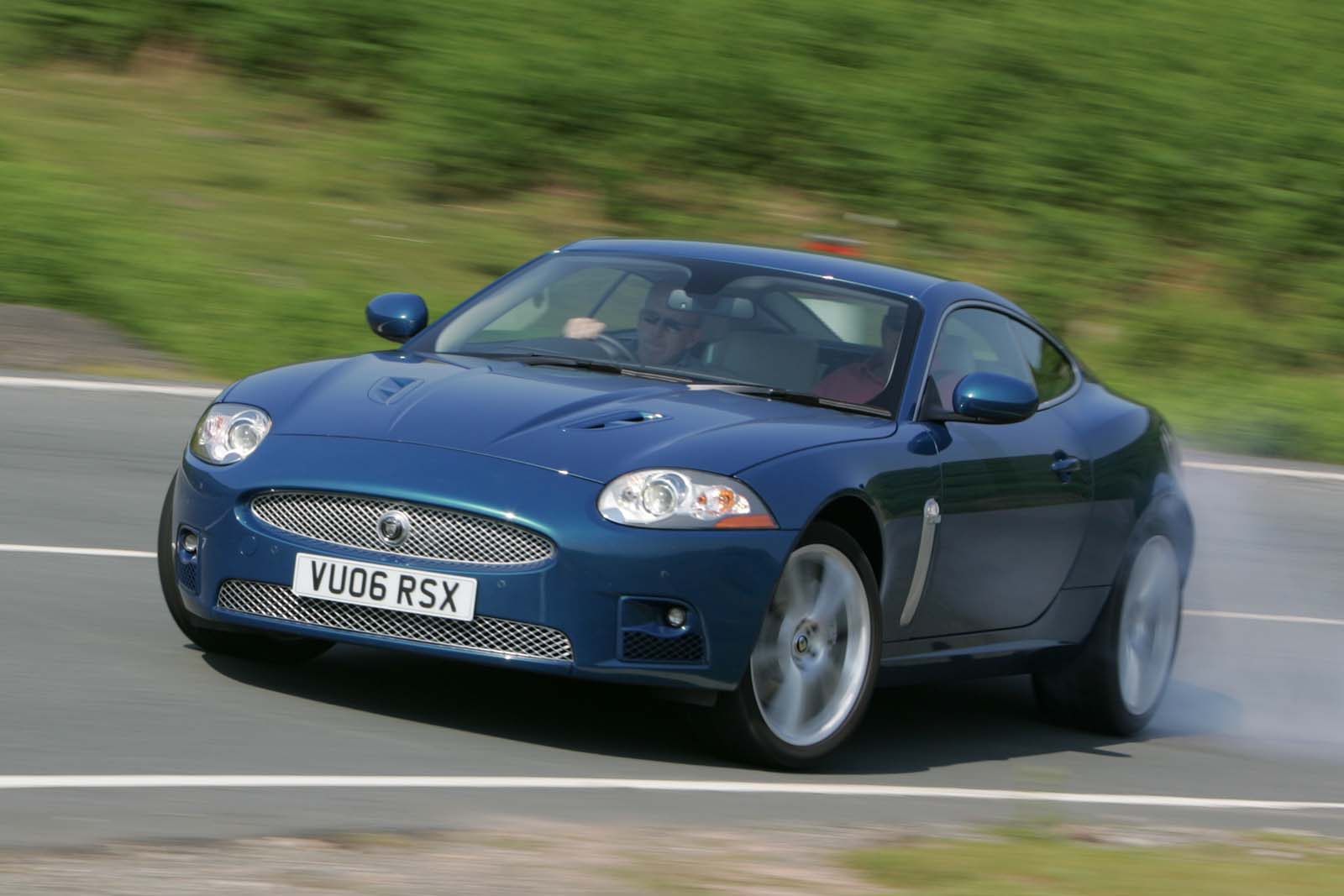
One wonders how much trouble McLaren’s engineers had quantifying ‘fun’ when it was suggested that quality might be essential to overhauling the 720S. It is a subjective attribute for one thing, and therefore tricky to quantify. It certainly defies a pie chart. Nevertheless, it was reportedly among the criteria that Michael Leiters – McLaren’s shrewd, newish CEO – proposed addressing. And engineers, particularly the obsessive sort employed at the MTC, do like to give their bosses what they ask for. Especially when said boss is an engineer himself.
Probably they asked him to drill into exactly what he meant, and by the time McLaren was ready to show the 750S last year, the sentiment had been boiled down to “truly exhilarating levels of emotional connection” – a quote attributed to Leiters. Which isn’t a bad stab at what we’re looking for when presented with a supercar of any stripe. Absolutely it characterises Ferrari’s approach to the segment (no coincidence there) and implies that a tweaking of the established 720S formula for its own sake would’ve been insufficient. Hearing the S-word mentioned at the unveiling speaks to the heart of the issue as well as any other: after nearly 15 years, what precisely constitutes McLaren’s soul?
Well, if any car embodies it, it is arguably the one labelled ’Super’ in the manufacturer’s four-pillar lineup. McLaren has built quicker, rarer and much more expensive derivatives, but, generally speaking, the showier Ultimate Series has dealt with the pursuit of very specific numbers. It has been left to multiple generations of the firm’s long-running and road-appropriate supercar to balance out the firm’s preoccupation with a more single-minded brand of performance.


For the record, the 720S, in many if not most respects, was sensationally good. Easy to forget nearly seven years on, but with a revamped 4.0-litre twin-turbo V8 and scintillating new look, it rampaged from the blocks in 2017 and skittled virtually everything in sight. Even easier now, of course, to hold its familiarity against the 750S, which really does bear more than a passing resemblance. Anecdotally, this hardly seems to matter: the Great British public knows a supercar when they see it, and McLaren’s newcomer – especially in open-top format – hits the exotica high notes as well as its predecessor ever did. Nevertheless, clearly this is not the far-reaching, 650S-to-720S transition that occurred all those moons ago.
Two things are equally plausible then. From the front, despite the lightweight new bumper and extended splitter, people, even enthusiasts, are liable to mistake new for old. And from the back, assuming you clock the alterations, you wouldn’t be alone in thinking the 750S marginally less appealing to look at than the car it replaces. Probably you’d need to see both Spiders side-by-side to decide which high-mounted exhaust or rear deck design you prefer: to PH’s bleary gaze, the 720S is slightly less fussy thanks to its simpler grille and separated tailpipes. Although there are no complaints over its newly enlarged and ever-ready-to-deploy spoiler. Which is good, because you eyeball it a lot in the rear-view mirror.
That’s when you’re moving (or braking, anyway). When you’re stationary, you’ll be seeing the new interior layout. No before and after comparison is required here; relative to the exterior, McLaren has gone to town. In all likelihood, the large rocker switches that flank the (also new) column-mounted instrument panel will earn it no design awards, but functionally speaking they are light years ahead of the 720S’s powertrain and chassis controls. Or they are once you’ve memorised which is which, because they’re tricky to see over the steering wheel rim. Still, in those crucial moments when you really want them to hand – including the ‘manual’ and ‘ESC’ buttons, which live in the centre – you’re saved the job of hunting for them on the dashboard.


The new infotainment interface, too, makes sense. Perhaps the metallic frame for the display isn’t a total triumph – and portrait orientation will always come with some limitations – yet gone are the days of your patience dissolving in a fiery instant. Some of the physical shortcut buttons have gone, too, but the latest menu system is intuitive enough to take up the slack. Sure, the DAB tuner still drops a nationwide signal when it probably shouldn’t and McLaren is still adamant that a klaxon must repeatedly sound if a fault is detected – but the nose-lifter gets its own button, the sat nav is fundamentally up to snuff and the Bluetooth connection rock solid. Meaningful progress, in other words.
In any other car, this would be the moment to mention that while McLaren is to be commended for saving the best part of 20kg by offering carbon fibre-shelled racing buckets, it might have seen its way to leaving a smidge more bolster in the mix. But any implication of discomfort while at the wheel of the 750S is to be avoided; the underlying ride quality is too astonishing for that, eclipsing even the supremely admirable job its predecessor did. It turns out that when McLaren assured us the car would feel different almost from the first moment, it was not overselling the distance between the two.
True, the 720S was definitely not the sort of supercar to have you weaving anxiously between manhole covers, yet its replacement is so accommodating – so wonderfully compliant, even at slow speeds – there is a temptation in ‘Comfort’ mode to actively seek out misaligned road furniture, as if to prove to yourself that the last obstacle it effortlessly negotiated wasn’t a fluke. Even allowing for the Spider’s innate firmness, there are saloons – the majority of them, in fact – that don’t ride this well. Better yet, at what we euphemistically call ‘road speeds’, there is seemingly no price to pay in body control or the surgical precision that we’ve come to expect from McLaren. There is just superlative, watch-this wheel control. All the time.


Among recent experiences, only the 911 S/T comes close to replicating this kind of otherworldly progress over imperfect roads – and it cannot rival the 750S’s formidable, physics-defying turn-in or the bewildering neutrality that swiftly follows. To say the Spider changes direction all-of-a-piece is like calling Jupiter a bit hefty. Whatever it did when tinkering with the design and geometry of the car’s newly lightened suspension, has paid off magnificently. Perhaps you’d be forgiven for occasionally wondering – as John H did in the Artura – if McLaren is now clinging to hydraulic steering a little too belligerently; the response is crisper off-centre in the Porsche, and it filters out some of the corrupting influences the 750S cannot. But the S/T didn’t communicate surface changes with the same fibrous nuance, and nor does it acquire weight as convincingly once you’re into the meat of a corner.
The car’s management of lateral load from then on, and the calibre of the communication with its contact patches – including the meticulous way it will accept you feeding power in – is never less than mesmerising. And aside, perhaps, for the committed downward pressure required by the brake pedal, nor is the astonishing performance between corners – although this is harder to get to grips with on the public road. Suffice it to say, the M840T needed an additional 30hp like Mr Kipling needs a free cake. The 750S puts paid to the idea that EVs have diminished the concept of ‘explosiveness’ in combustion cars; whenever prompted to do so, the 750S gathers up the horizon like a low-slung black hole. Which is to say voraciously and continually. With the final drive ratio shortened by 15 per cent, it makes fourth gear feel like second would elsewhere, and, at this time of year, asks an awful lot of its 305-section rear tyres. Very obviously, it is intended to take your breath away. And, if you’re not exceptionally careful, your licence with it.
It is still though, even in the Spider’s amphitheatre, a wildly better producer of speed than it is noise. Having driven it extensively away from cat’s eyes – and therefore much closer to its full potential – Matt B had a better opinion of its engine note, yet for all the work done on its new exhaust, the V8’s frenetic, respiratory presence seems like an apt accompaniment to your progress, not the primary reason for buying a ticket. Previously, this demonstrated a broader weakness in the 720S; when you were in the mood, it could do outlandish things with your doughy pleasure centre. But it could not always put you in the mood. Not like a Ferrari could, at any rate.


Many of the changes made to its successor are clearly intended to reshape that sentiment, and the ability of the revised suspension to absorb so much punishment without unsettling or impeding its delicate handling balance does have a transformative effect – not just on your comparative comfort or the car’s cruising ability, but on your mindset when driving it. While the 720S was certainly deft enough to flow with a winding country road, it left you with the impression that it was intended to make its driver faster, not happier. By making the chassis truly breathe, no matter the backdrop or speed, the 750S upends this ratio: it trades solemnity for levity. Think Alpine A110 but with 750hp and a retractable hard-top. Think petrol-burning tonic for whatever ails you.
Granted, it comes at inevitably huge cost, and there is a tendency among hedgerows and speed limit signs to occasionally question whether or not the new model absolutely needed its uprated savagery in the straight-line department – but, honestly, who now would deny McLaren the opportunity to wring as much as possible from the V8 before time is called? Moreover, its excess (or the potential for it) is a sideshow on the road: the 750S is so invigorating everywhere else that it does not require you to double or triple the national limit to tap into its wavelength. It’s all around you in the car’s usability, handling finesse and sheer unputdownable-ness. It makes bad roads good and sunny days great. And if that’s not fun in 2024, nothing is.
SPECIFICATION | MCLAREN 750S SPIDER
Engine: 3,994cc, twin-turbo V8
Transmission: 7-speed SSG, rear-wheel drive
Power (hp): 750@7,500rpm
Torque (lb ft): 590@5,500rpm
0-62mph: 2.8sec
Top speed: 206mph
Weight: 1,438kg (fluids + 90 per cent fuel)
MPG: 23.2
CO2: 276g/km
Price: £267,900 (Starting price; price as tested £324,390, comprising Performance Interior for £6,900, MSO Exterior Paint, Ludus Blue for £8,200, Exterior Details Carbon Fibre Pack for £5,800, Retractable Hard Top Roof with Glazed Electrochromic for £7,500, Headlight Surround painted body colour for £1,800, Front Fenders and Louvres painted body colour for £5,000, Sound Comfort Windscreen for £1,000, Red Brake Calipers with Silver Machined McLaren Logo for £1,570, Vehicle Lift for £2,200, Sill Trim in Carbon Fibre for £2,700, Carbon Fibre Interior Pack for £5,000, Steering Wheel in Black Alcantara for £520, Red Seat Belts for £550, Red Contrast Decorative Stitching for £500, Bowers and Wilkins 12-Speaker Audio System for £3,750 and 360 Degree Park Assist for £3,500)
Source link
#McLaren #750S #Spider #Review



